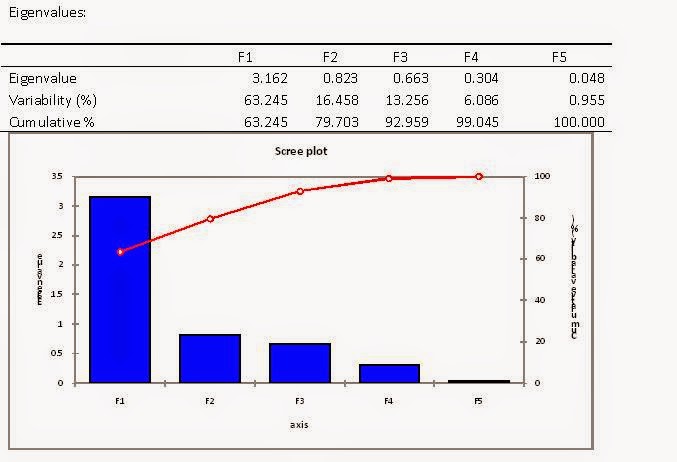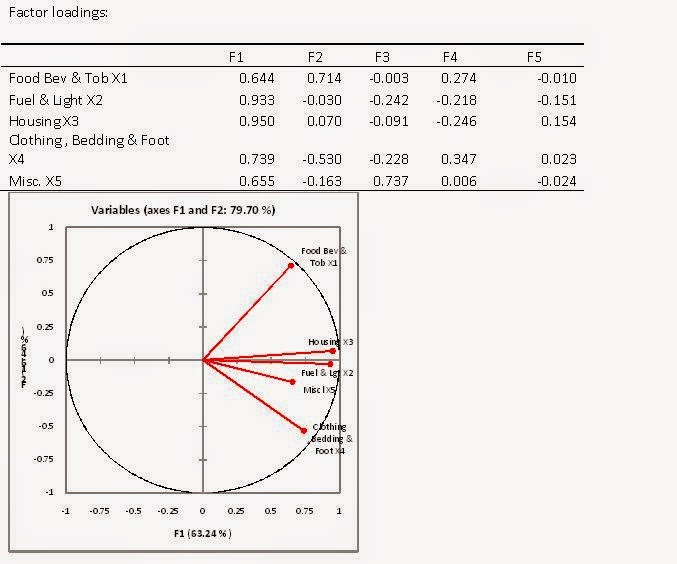A statistical review in the trends of Consumer Price based inflation in India from July 2013 to May 2014
Generally it has been observed that both economists & consumers spend a lot of time on understanding & evaluating Consumer Price Index (CPI) rather than Wholesale Price Index (WPI). This tiny attempt is to find the principal component amongst the different constituents of CPI. The time span of the study is from July 2013 to May 2014. It is technically a transition phase in Indian economy as the RBI Governor D V Subba Rao finished his term and ably replaced by Dr Raghuram Rajan, the person who predicted the global crisis way back in 2008. Since this is an original piece of analytical study, so, the source for the material is obtained from Clearing Corporation of India Ltd (CCIL), which was set up in April, 2001 for providing exclusive clearing and settlement for transactions in Money, GSecs and Foreign Exchange.
This study is about finding out the most prominent factor or factors within the constituents of CPI. Consumer Price Index has primarily five constituents. Namely they are Food Beverages & Tobacco, Fuel & Light, Housing, Clothing, Bedding & Footwear, and Miscellaneous. All these are considered as X Variables here, and Principal Component Analysis has been carried out to identify the major components to determine CPI in the said time period under the Union of India. The Pennsylvania State University has mostly done PCA analysis for understanding their economic variables so far among the leading Universities in the Globe.Common belief states that X variables with higher weightage have higher volatility & they eventually dictate the terms on CPI. This study is going to confirm the correctness both quantitatively & qualitatively.
| ||||||||||||||||||||||||||||||||||||||||||||||||||||||||||||||||||||||||||||||||||||||||||||||||||||||||||||||||||||||||||||||||||||||||||||||||||||||||
[1]https://www.ccilindia.com/Research/CCILPublications/MacroEconomicUpdates/Lists/lstMacroeconomicsPubReviewEconomy/Attachments/88/MRE%20Jul%202014.pdf
Factor Loading shows that for F1, all the variables (X) are in strong positive correlation, they grow & decay together in the same direction. Only the intensity for X2 & X3 are more than the others.
F2 shows, that X1 grows & X4 decays simultaneously. Others are insignificant here. F3 has only Misc. (X5) which is significant. F4 & F5 has no variable varying significantly. Between F1 & F2 the most consistent X variable in behaviour is X1.
The first point to be noted here is that Eigenvalue is dropping rapidly from the first Factor F1 (3.162) to the second factor F2 (0.823). This signifies that F1 & F2 could be considered for interpretation of the results.
It can also be noted that the first variable i.e. Food, Beverages & Tobacco (X1) has very high Std Deviation (1.71) compared to the other variables. In Factor loading also, X1 has consistently high figure (0.64 & 0.71) in the two factors of maximum prominence (F1 & F2).
Second Variable or X2 i.e. Fuel & Light has scored well in Std Deviation but in Factor Loading its contribution drastically comes down and with a sharp pace (from 0.93 to -0.03).
Other three variables do show significant instability in pattern.
Thus it could be concluded by the researcher here that Food, Beverages & Tobacco has a cardinal impact or could be termed as the segment of Principal Component while deriving CPI in India in a study period of July 2013 to May 2014. Whereas different time frame could certainly yield different outcome. So, it could be easily concluded that CPI depends upon Food Inflation, Beverage Inflation & Tobacco Inflation.
Other factors are not consistent in affecting the CPI measurement, as par Government of India regulations.
In simple terms Consumer Price Index or CPI depends upon Food, Beverages & Tobacco in a significant way. So, if a common man notices that CPI is high or going up (by reading newspaper), he should be able to interpret it in this way that prices of Food, Beverages & Tobacco are also going up. On the other hand if a common man notices that Food, Beverages & Tobacco prices are rising he will be in a position to conclude that CPI too is rising. He will however cannot conclude the same thing for the other parameters such as Housing, Clothing, Bedding, Footwear or Fuel, Light though.
Study Conducted By
Asst. Prof Bikramaditya Ghosh





